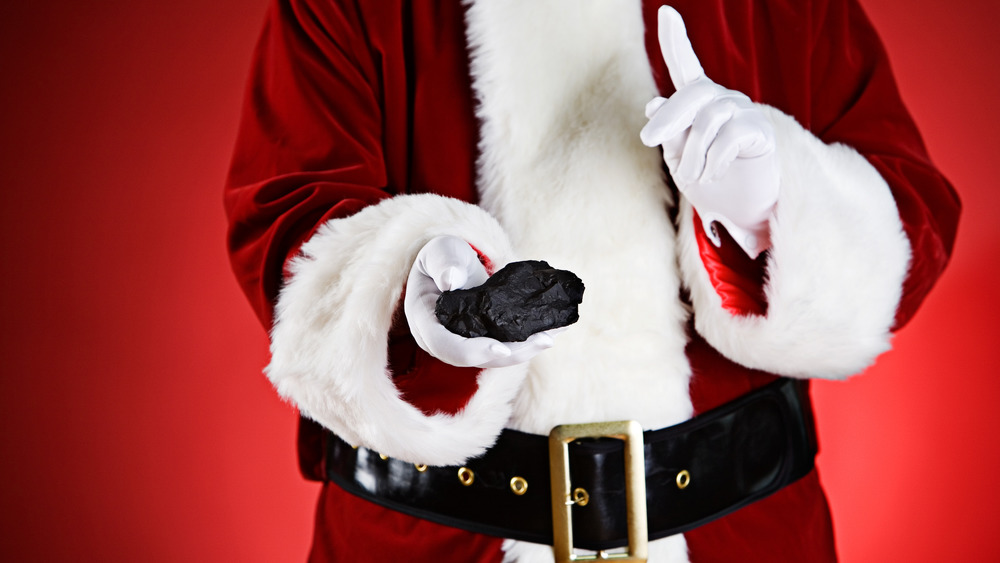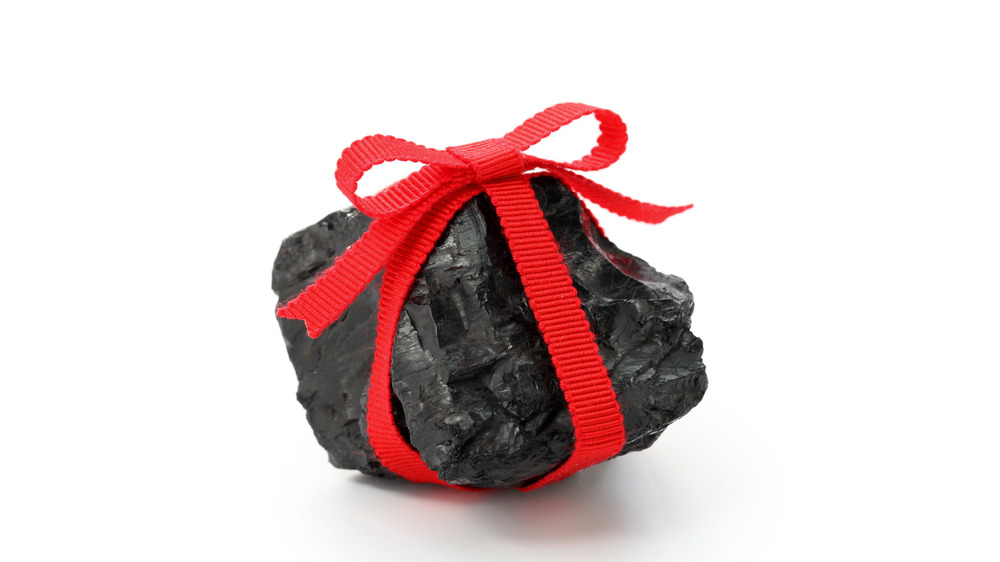The Real Reason Santa Leaves Coal For Bad Children
Where and when did the tale originate? Santa Claus, leaving lumps of coal instead of Christmas presents for naughty children? According to Mental Floss, the tradition predates Santa and is found in tales of several individuals. There's St. Nicholas, who was a Third Century Greek bishop, known for his generosity, the "patron of children and magical gift bringer," per National Geographic. Sinterklaas, the Dutch legend based on St. Nicholas, is believed to be the direct predecessor of Santa Claus, thanks to Dutch and German immigrants who brought the tradition to the United States, as reported by The Spruce Eats. There's also La Befena, a figure from Italian folklore who brings good children gifts on the morning of Epiphany, January 6, per Eataly.
Mental Floss noted that there's no specific story about any of these figures handing out coal instead of gifts to those who have misbehaved, but there is the common thread of convenience: All of these figures traditionally enter homes through the chimney. The gift giving all traditionally revolves around fireplaces as well, with Santa Claus and La Befana leaving gifts in stockings hung by the chimney, and Sinterklaas and St. Nick leaving presents in shoes left by the fireplace. In the 19th and early 20th century, coal-burning fireplaces were very common, as opposed to wood-burning fireplaces. This would make scooping up a lump of coal for the bad kids an easy thing to do in order to punish bad behavior with an undesirable "gift."
There was a time when coal was actually a good gift
Mental Floss further noted that with the exception of Santa Claus, the other legendary gift givers also were known to give bad kids such items as sticks, garlic, onions, and bags of salt, suggesting they would actually carry undesirable gifts with them, as opposed to just fishing some coal out of the fireplace. The Atlantic pointed out that in the 19th century, when the current concepts of Christmas and Santa Claus were still developing, there's little mention of coal or other punishments for naughty children. The author referenced the 1823 poem "Account of a Visit From Saint Nicholas," (now more commonly known as "The Night Before Christmas") which "imagines St. Nick as wholly benevolent, his bag containing only toys for the good little girls and boys."
The article further stresses that coal was actually considered a practical gift for adults, quoting an 1892 story in which parents receive coal and potatoes in their stocking "just as they do every Christmas," a Victorian poem in which a grateful family receives coal and turkey from a neighbor on Christmas Day, and a short story in which a poor family receives Christmas gifts from relatives, including a cellar of coal. Coal as "gag gift" for those who haven't earned real gifts via good behavior didn't come into play until later, when coal was plentiful and readily available to scoop out of the (presumably cold) fireplace and into stockings.

